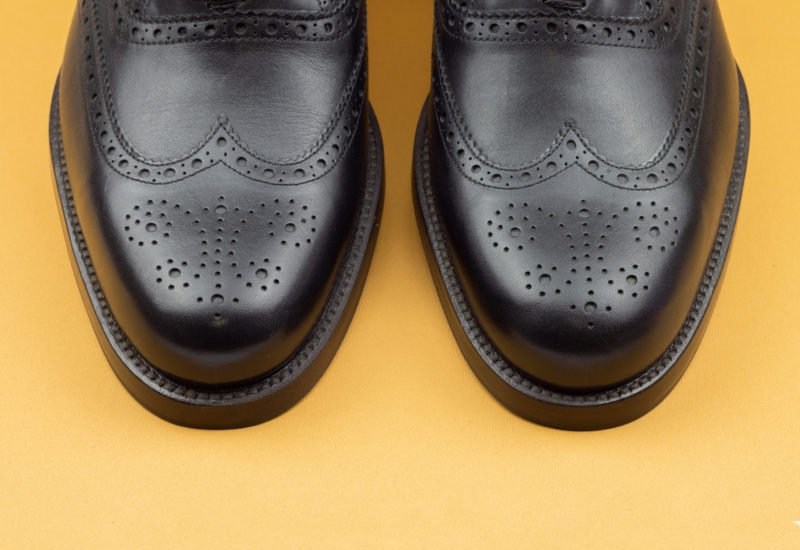When talking about shoes, there is a pile of terms that are wrongly used. Models that we all have worn sometimes, or even daily, but we do not identify. Today’s lesson is about a modern classic: the Wingtip shoe.
If you are not a footwear connoisseur, Wingtip will probably sounds like a farming tool to you. But even if you don’t know it, surely you have had or usually wear on your feet this model with centuries of life that keeps fresh as a rose of May.
Shoe lack of knowledge has reached such a point that we call an Oxford everything that is not a loafer nor a sneaker. As soon as there are laces around and a leather sole, all is named as an Oxford shoe. In this previous post we already made clear the difference between an Oxford and a Derby. Something basic level but that few people know, as we have been able to verify by looking at the number of visits that the post receives organically.
You can watch a quick video that we made where we show and explain everything that we talk about in this post:
Here we are going to dig deeper with a model that is well known but misunderstood.
WHAT IS A WINGTIP?
A Wingtip shoe is characterized by its M or W shaped toe if we look at it from above. The toe of the Wingtip draws a line towards the sides of the shoe that resembles the wings of a bird.

They belong to the family of Brogues and some connoisseurs out there calls them also Full Brogues.
It is mostly decorated with small perforations or cutouts as in the picture. In this case, our Ernesto model is an Oxford but it is also a Wingtip and a Brogue.
WHERE DOES WINGTIP COME FROM?
This model has its origin in Scotland and Ireland and is a variation of the traditional Brogue. It was a handcrafted, rough and very thick leather shoe that was used at countryside. Its perforations allowed to drain the water that entered the foot and thus dry quickly.
Due to its comfort and resistance it became the footwear for outdoor activities such as hunting. They were never used indoors.
At the beginning of the 20th century they became popular thanks to the Prince of Wales who wore them on a golf outing in a two-tone option. In this case, when the leather comes in two colors, they are called Spectators. This model became widely mainstream thanks to Fred Astaire and Gene Kelly.
Although historically it has always been a model for leisure time, it is curious how a shoe that was worn in the country is now something considered, due to ignorance, a formal shoe.
HOW TO WEAR WINGTIPS
My advise is not wearing them with a suit, because they still have a country look. They are perfect for jeans, chinos, wool trousers, etc., because it is something more relaxed than formal shoe.
You should never wear them in a business environment or at sober events like funerals. But currently, wingtips are accepted with a suit and of course with casual jackets. Everything will depend on the color and design of the shoe. The more sober the more acceptable for suits. Remenber: bicolor ones are risky and only for those who have enough taste to wear them with style. Or eventually for gangster fancy dresses.
If they are the first dress shoes you are going to buy, I would heartily recommend that you go for a different option. Better choose a classic Oxford like the one in the picture, in black. A Wingtip should be your second or third option, because it is not as versatile as an Oxford shoe.

But if you want to escale up your wardrobe and not dress like a janitor, experiment and expand your options. Think of them as “a more relaxed option but one that shows my interest in looking god.”
You can watch a quick video that we made where we show and explain everything that we talk about in this post:


